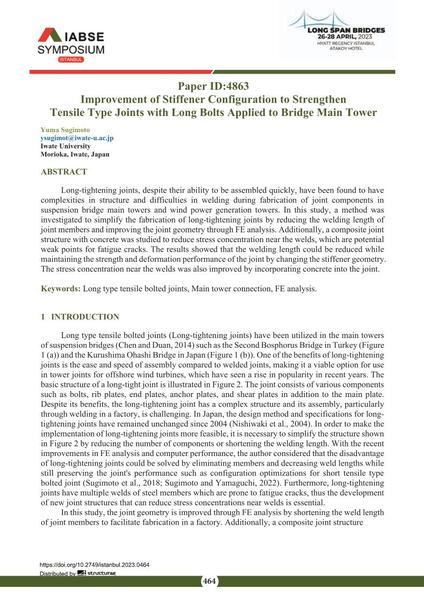Improvement of Stiffener Configuration to Strengthen Tensile Type Joints with Long Bolts Applied to Bridge Main Tower

|
|
|||||||||||
Détails bibliographiques
| Auteur(s): |
Yuma Sugimoto
(Iwate University Morioka, Iwate, Japan)
|
||||
|---|---|---|---|---|---|
| Médium: | papier de conférence | ||||
| Langue(s): | anglais | ||||
| Conférence: | IABSE Symposium: Long Span Bridges, Istanbul, Turkey, 26-28 April 2023 | ||||
| Publié dans: | IABSE Symposium Istanbul 2023 | ||||
|
|||||
| Page(s): | 464-471 | ||||
| Nombre total de pages (du PDF): | 8 | ||||
| Année: | 2023 | ||||
| DOI: | 10.2749/istanbul.2023.0464 | ||||
| Abstrait: |
Long-tightening joints, despite their ability to be assembled quickly, have been found to have complexities in structure and difficulties in welding during fabrication of joint components in suspension bridge main towers and wind power generation towers. In this study, a method was investigated to simplify the fabrication of long-tightening joints by reducing the welding length of joint members and improving the joint geometry through FE analysis. Additionally, a composite joint structure with concrete was studied to reduce stress concentration near the welds, which are potential weak points for fatigue cracks. The results showed that the welding length could be reduced while maintaining the strength and deformation performance of the joint by changing the stiffener geometry. The stress concentration near the welds was also improved by incorporating concrete into the joint. |
||||

